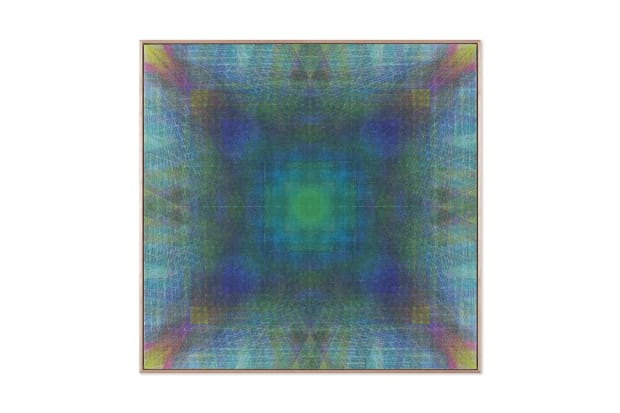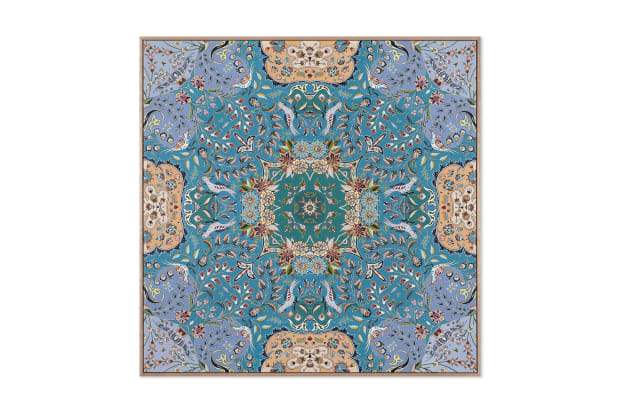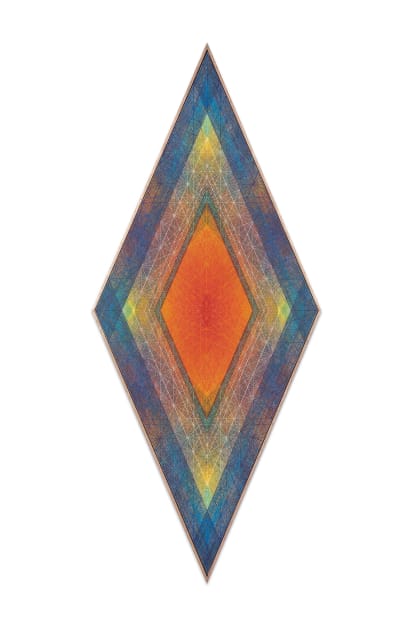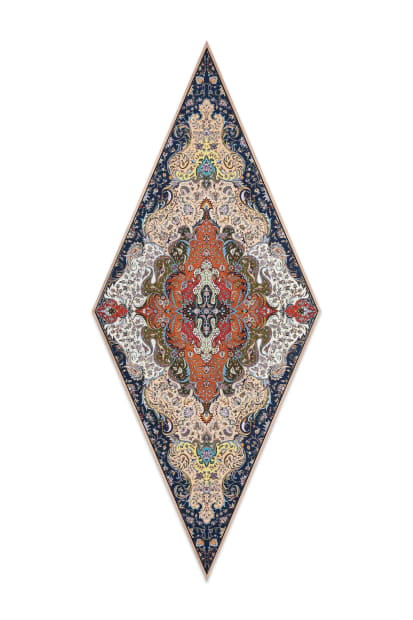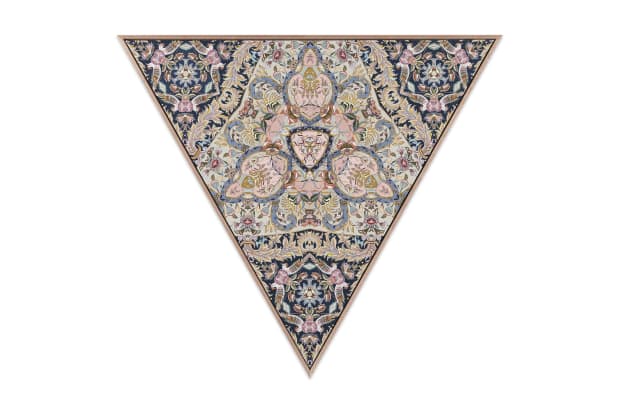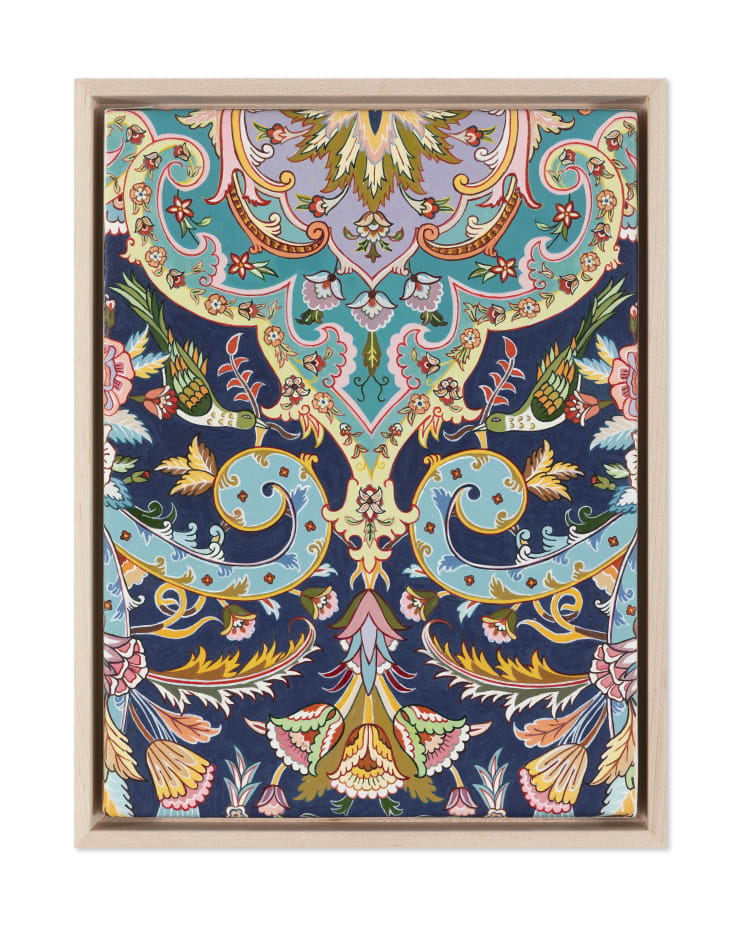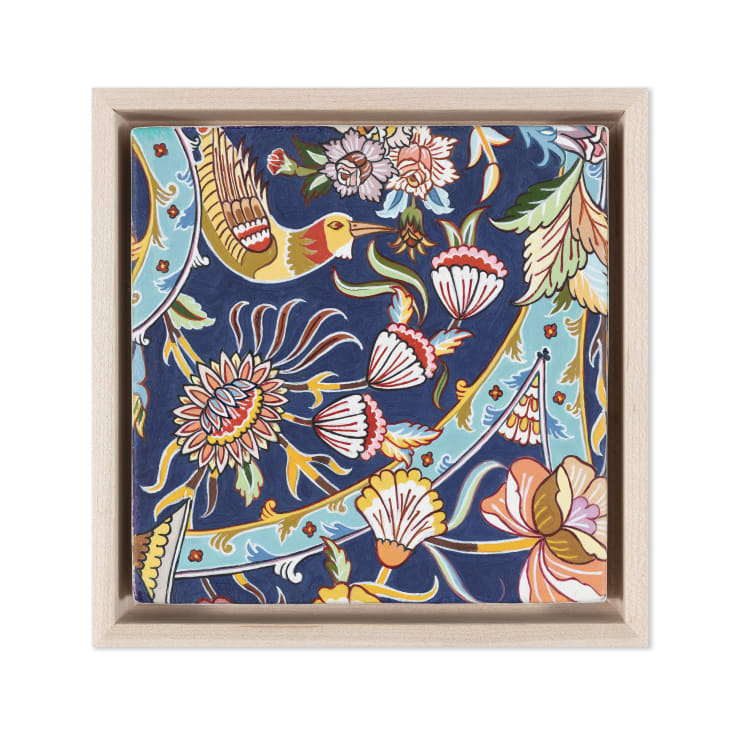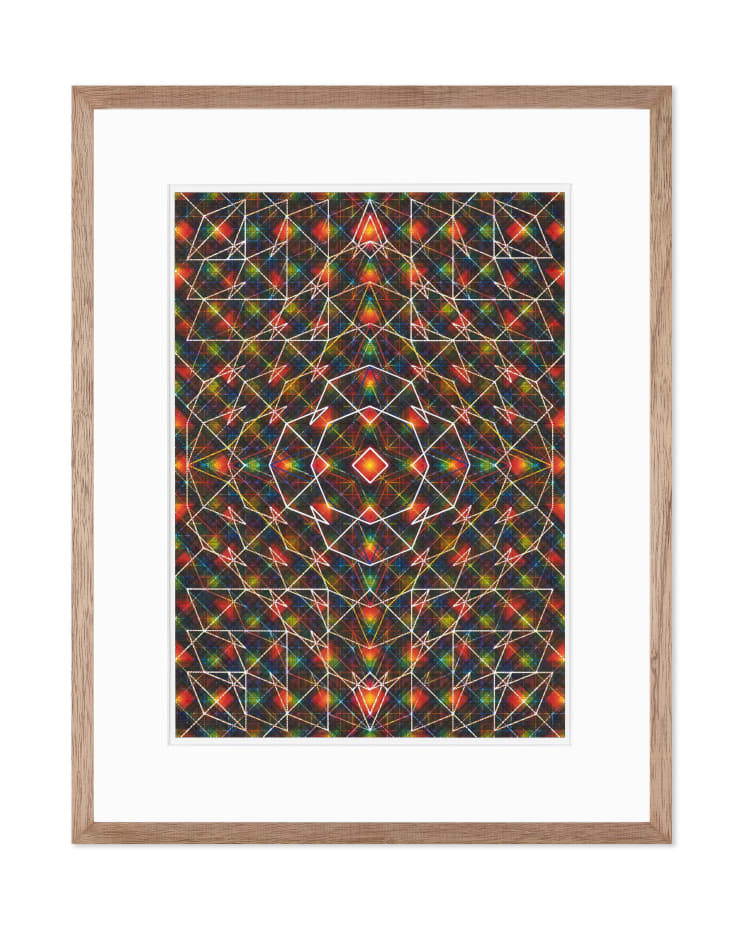-
Nima Nabavi and Jason Seife
Duality
-
The Third Line is pleased to announce Duality, featuring new works by artists Nima Nabavi and Jason Seife. Duality is a showing of two artists working together in symbiosis, a product of an enduring "art friendship". In ways both literal and metaphorical, the exhibition is a way of putting pen to paper on developments that were organically occurring when two artists who share a particular way of seeing collide.
-
Duality: Nima Nabavi and Jason Seife
Dr Natasha Morris -
-
 Nima Nabavi, Civic, 2023, Archival ink on canvas, 92.2 x 94.4 x 5 cm, framed
Nima Nabavi, Civic, 2023, Archival ink on canvas, 92.2 x 94.4 x 5 cm, framed -
-
 Jason Seife, Civic, 2023, Oil and Acrylic on Canvas, 94.5 x 94.7 x 5 cm, framed
Jason Seife, Civic, 2023, Oil and Acrylic on Canvas, 94.5 x 94.7 x 5 cm, framed -
-
"It entails a tangible sense of mutual respect and the deep knowing of someone else which extends, at its most intimate, into the anticipation of their next move. What results is a symbiosis that becomes a pas de deux."
Up close, the detail is rich and even more complex than either artist had attempted before. There is a subtlety of matching elements in response to one another. There may be a corner of blue, or a hexagon of orange, that at once appears bold as brass to Seife’s eye that becomes a gauzy layering of tones in Nabavi’s execution. Ultimately, they work in very different mediums, and although they may mirror one another structurally, the works retain the tell-tale idiosyncrasies of their maker’s approach. Seife’s work is bold in its flatness and opacity, with pools of pure colour and satisfyingly smooth outlines crafted in a way that is resoundingly painterly. There is room for plenty of tension, perhaps, in these juxtapositions, but in keeping each work’s independence they avoid direct conflict. Working in tandem like this is hugely revealing. It entails a tangible sense of mutual respect and the deep knowing of someone else which extends, at its most intimate, into the anticipation of their next move. What results is a symbiosis that becomes a pas de deux.
-
 Nima Nabavi, Level, 2023, 2023, Archival ink on canvas, 189 x 79.2 x 5 cm, framed
Nima Nabavi, Level, 2023, 2023, Archival ink on canvas, 189 x 79.2 x 5 cm, framed -
-
 Jason Seife, Level, 2023, 2023, Oil and acrylic on canvas, 190.5 x 78.5 x 5 cm, framed
Jason Seife, Level, 2023, 2023, Oil and acrylic on canvas, 190.5 x 78.5 x 5 cm, framed -
-
 Nima Nabavi, Radar, 2023, Archival ink on canvas, 84 x 95 x 5 cm
Nima Nabavi, Radar, 2023, Archival ink on canvas, 84 x 95 x 5 cm -
-
 Jason Seife, Radar, 2023, Oil and Acrylic on Canvas, 83.2 x 95 x 5 cm
Jason Seife, Radar, 2023, Oil and Acrylic on Canvas, 83.2 x 95 x 5 cm -
-
The middle void, a white-hot pin within the irradiated braids of colour, was a way to work together on the centre as the generative and anchoring point of departure; this solved not only the issue of who would begin the piece but cultivated a working method akin to a trust exercise. Without the central point, Nabavi and Seife were forced outside their respective comfort zones of creation: there was no compass point of sunburst shamseh medallion of a carpet to work around. Both practically and symbolically, in Noon each half must lean on the other to create the middle.
This dichotomy between freedom and discipline that accountability and exchange create has pushed each artist to evolve. This was the first time Seife had taken away the foundational anchors and borders from his work. The growth and expansion of his approach to pattern and composition, geometry, and design has been developed significantly from working so close to Nabavi’s precision. On the other hand, Nabavi found himself compelled to work beyond the logical limits of the rainbow spectrum. As natures inherent prism, it had been the palette of his work in its most pure iterations. Working with Seife even had him looking at his family’s Persian carpets anew: there was a wildness of tonal companions, unexpected combinations, and fields of colour – complimentary or clashing, harmonious and discordant, deep versus light – that in turn encouraged him to let go of familiar or immediately appealing colourways. Collaboration was perhaps the natural next step for both to take. A dual exhibition was the culmination of a process that had already been burgeoning since their first initial contact, where the suggestive seeds of trying different papers, colours, and compositional combinations on each other’s recommendations were beginning to germinate. In ways both literal and metaphorical, the exhibition is a way of putting pen to paper on developments that were organically occurring when two people who share a particular way of seeing collide.
Such lessons in compositional chemistry are already being applied in the production of new works, with both artists approaching changes in medium, scale and shape with fresh eyes and ready hands. What will endure most, perhaps, for both the makers and viewers of these pieces, is the idea of tapping into someone else’s idea of the infinite whilst working on your own.
-
-
 Nima Nabavi and Jason SeifeNoon, 2023Archival ink, oil and acrylic on canvas158.75 x 158.75 cm
Nima Nabavi and Jason SeifeNoon, 2023Archival ink, oil and acrylic on canvas158.75 x 158.75 cm -
 Nima NabaviTenet, 2023Archival ink on canvas88.9 × 177.8 cm
Nima NabaviTenet, 2023Archival ink on canvas88.9 × 177.8 cm -
 Jason SeifeTenet, 2023Oil and acrylic on canvas88.9 x 177.8 cm
Jason SeifeTenet, 2023Oil and acrylic on canvas88.9 x 177.8 cm -
 Nima NabaviCivic, 2023Archival ink on canvas89.8 x 91.8 cm
Nima NabaviCivic, 2023Archival ink on canvas89.8 x 91.8 cm -
 Jason SeifeCivic, 2023Oil and acrylic on canvas92.1 x 92.4 cm
Jason SeifeCivic, 2023Oil and acrylic on canvas92.1 x 92.4 cm -
 Nima NabaviLevel, 2023Archival ink on canvas76.2 x 181.45 cm
Nima NabaviLevel, 2023Archival ink on canvas76.2 x 181.45 cm -
 Jason SeifeLevel, 2023Oil and acrylic on canvas181.45 x 76.2 cm
Jason SeifeLevel, 2023Oil and acrylic on canvas181.45 x 76.2 cm -
 Nima NabaviRadar, 2023Archival ink on canvas91.44 x 79.2 cm
Nima NabaviRadar, 2023Archival ink on canvas91.44 x 79.2 cm -
 Jason SeifeRadar, 2023Oil and acrylic on canvas91.44 x 79.2 cm
Jason SeifeRadar, 2023Oil and acrylic on canvas91.44 x 79.2 cm -
 Jason SeifeUntitled 1, 2023Oil and acrylic on canvas31.75 x 31.75 cm
Jason SeifeUntitled 1, 2023Oil and acrylic on canvas31.75 x 31.75 cm -
 Jason SeifeUntitled 2, 2023Oil and acrylic on canvas31.75 x 31.75 cm
Jason SeifeUntitled 2, 2023Oil and acrylic on canvas31.75 x 31.75 cm -
 Jason SeifeUntitled 3, 2023Oil and acrylic on canvas24.13 x 31.75 cm
Jason SeifeUntitled 3, 2023Oil and acrylic on canvas24.13 x 31.75 cm -
 Jason SeifeUntitled 4, 2023Oil and acrylic on canvas24.13 x 31.75 cm
Jason SeifeUntitled 4, 2023Oil and acrylic on canvas24.13 x 31.75 cm -
 Jason SeifeUntitled 5, 2023Oil and acrylic on canvas24.13 x 31.75 cm
Jason SeifeUntitled 5, 2023Oil and acrylic on canvas24.13 x 31.75 cm -
 Jason SeifeUntitled 6, 2023Oil and acrylic on canvas16.51 x 16.51 cm
Jason SeifeUntitled 6, 2023Oil and acrylic on canvas16.51 x 16.51 cm -
 Jason SeifeUntitled 7, 2023Oil and acrylic on canvas16.51 x 16.51 cm
Jason SeifeUntitled 7, 2023Oil and acrylic on canvas16.51 x 16.51 cm -
 Nima Nabavi2023.05.17, 2023Archival Ink on panel28.57 x 28.57 cm
Nima Nabavi2023.05.17, 2023Archival Ink on panel28.57 x 28.57 cm -
 Nima Nabavi2023.05.21, 2023Archival ink on paper46.99 x 40.64 cm
Nima Nabavi2023.05.21, 2023Archival ink on paper46.99 x 40.64 cm -
 Nima Nabavi2023.07.12, 2023Archival ink on panel28.57 x 28.57 cm
Nima Nabavi2023.07.12, 2023Archival ink on panel28.57 x 28.57 cm -
 Nima Nabavi2023.07.14, 2023Archival ink on panel28.57 x 28.57 cm
Nima Nabavi2023.07.14, 2023Archival ink on panel28.57 x 28.57 cm -
 Nima Nabavi2023.07.15, 2023Archival ink on paper28.57 x 28.57 cm
Nima Nabavi2023.07.15, 2023Archival ink on paper28.57 x 28.57 cm -
 Nima Nabavi2021.03.14, 2021Acrylic on canvas33.02 x 33.02 cm
Nima Nabavi2021.03.14, 2021Acrylic on canvas33.02 x 33.02 cm -
 Nima Nabavi2022.05.07, 2022Archival ink, acrylic on paper39.37 x 49.53 cm
Nima Nabavi2022.05.07, 2022Archival ink, acrylic on paper39.37 x 49.53 cm -
 Nima Nabavi2022.06.08, 2022Ink on tracing paper40.01 x 55.88 cm
Nima Nabavi2022.06.08, 2022Ink on tracing paper40.01 x 55.88 cm
-
